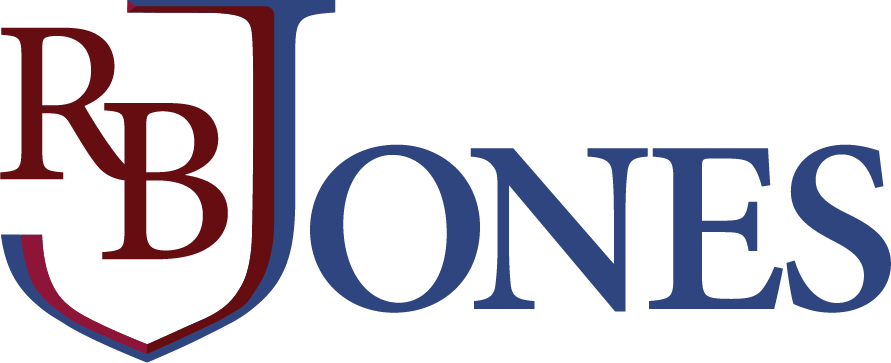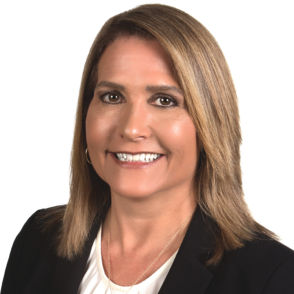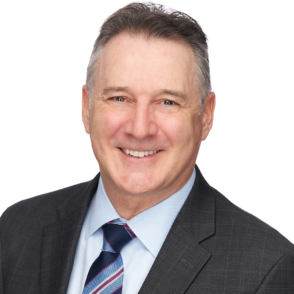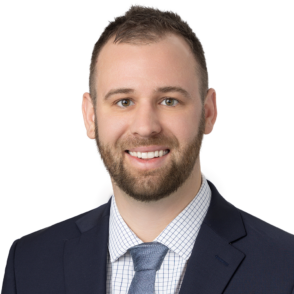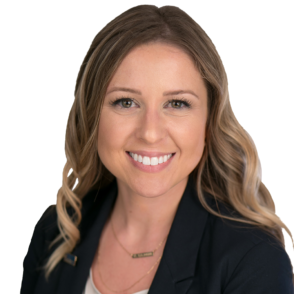Key Takeaways:
- Property & Casualty (P&C) market conditions are stabilizing, with increased competition and moderating rates—though CAT-prone regions remain volatile.
- Excess & Surplus (E&S) carriers remain vital for distressed sectors like Habitational, Hospitality, and Liquor Liability, even as admitted carriers return to select segments.
- Severe weather is reshaping risk, as seen in recent Texas flooding and California wildfires earlier this year, highlighting the growing need for Flood and Wildfire insurance.
- Litigation trends are escalating, with thermonuclear verdicts on the rise—driving up loss costs and impacting limits and pricing.
- Admitted carriers are competing aggressively, particularly in Personal Insurance, while E&S markets continue to address complex and high-risk placements.
- Perfluoroalkyl and polyfluoroalkyl substances (PFAS) liability is growing, leading to higher Environmental premiums, limited coverage, and more layered placements.
- Cyber threats are increasing, with the insurance industry as a prime target. Carriers are tightening coverage and pricing for impacted accounts.
INTRODUCTION
The P&C market is currently experiencing stabilization as compared to recent years. In a reversal from recent trends, even admitted carriers are eager to preserve renewals and willing to compete on price for new business.
A sluggish housing market is one reason for moderating rates, with more supply than demand in many regions. An April 2025 Redfin analysis found 500,000 more U.S. home sellers than buyers—the largest gap in over a decade, which may drive prices down in some markets.
As admitted carriers ramp up efforts to attract new business, E&S providers face intensified competition. Traditional insurers have stabilized their P&C operations and are actively expanding their portfolios. Consequently, rates, terms and conditions (T&C) are increasingly market-driven, contributing to the overall stabilization of the market.
There is, however, a caveat to this recent trend of a stabilizing P&C market. Chaotic weather patterns continue, elevating risk in coastal states for hurricanes and western U.S. states and Canadian provinces for wildfires. The death toll from catastrophic July floods in Texas was nearly 135 as of July 16, with some people still missing. Some parts of the state received as much as 15 inches of rain in less than two days.
Additionally, the 2024 hurricane season saw 18 named storms, including 11 hurricanes (winds of 74 mph or higher) and five major hurricanes (category 3 or greater with winds of 111 mph or higher). Had storms like Helene and Milton made landfall in more populated areas of the Southeast U.S., the market may look very different right now.
LA wildfire impact less than anticipated
As tragic as the catastrophic wildfires that devastated southern California in January 2025 were, the industry impact from the mild wildfire year of 2024 was greater. The original prediction from industry leaders was that the Los Angeles wildfires earlier this year would force carriers to limit or be more selective in their available capacity, but that has yet to happen.
There are several reasons for this. The leading reason: carriers and market stakeholders have spent at least 10 years making financial and operational investments to better understand wildfires, from how they behave to outlining risk mitigation best practices for Personal Insurance. Burns & Wilcox began working with Wildfire Defense Systems a few years ago to promote and understand wildfire risk mitigation strategies, launching a wave of home hardening activities that are widely used and embraced.
Perhaps the most notable industry outcome of the southern California wildfires is that they were not limited to the hills surrounding the greater Los Angeles area, but that they spread to such communities as Palisades and Malibu along the Pacific coastline. That is an important consideration when predicting the impact of future fires.
Ongoing and emerging industry trends:
- Legal and economic challenges: Continued growth in litigation financing, jury shopping, and the influence of a well-coordinated plaintiff’s bar—combined with economic and social inflation—are driving up loss costs. For example, $1 million policy limits may fall short as building material costs continue to rise. Real estate services company JLL projected a 5–7% increase in construction costs in 2025.
- TVM: The industry is increasingly adopting the time value of money (TVM) principle—recognizing that money today is more valuable than the same amount in the future. Investing in operational efficiency now can create long-term opportunities.
- Thermonuclear verdicts: While nuclear verdicts—jury awards exceeding $10 million—have become a growing concern for insurers, a new level of exposure is emerging. Thermonuclear verdicts, defined as jury awards exceeding $100 million, are increasingly common in Product Liability, Commercial Auto, and Medical Malpractice cases. These extreme awards occur in state courts 90% of the time, with the top states including California, Florida, New York, Texas, Georgia, Illinois, Pennsylvania, Washington, Missouri, and Ohio, according to Litigation Commentary & Review, April 2025.
- Public protest exposure: There are rising concerns around liability stemming from protests and large urban gatherings. Carriers are increasingly requiring exclusions for actions of law enforcement, border security, and other government entities due to the heightened risk of violence or property damage.
- Tariff uncertainty: The ongoing debate over federal tariffs is creating economic unease. This uncertainty is causing consumers to pull back on spending and businesses to delay hiring or capital investments.
- Technology and scalability: As capacity grows from non-admitted carriers, some E&S providers are struggling to keep pace with tech and AI expectations. Admitted carriers are targeting E&S acquisitions to scale more efficiently—while some E&S carriers are showing greater willingness to be acquired.
- Cyber threats: Cybercriminal activity targeting the insurance industry is on the rise. The group Scattered Spider is responsible for 20–25% of attacks on finance and insurance organizations. Philadelphia Insurance Co. recently experienced a multi-week “security incident,” highlighting the ongoing risk.
RATES
As mentioned above, rates across many P&C sectors have largely moderated, especially in the Personal Insurance space. Many insureds can expect flat, or lower renewal rates if absent of any recent claims. Most large carriers are adding to their books of business by offering competitive rates to attract new clients. Despite this trend, carriers generally remain unwilling to reduce deductibles.
Some areas remain challenged, such as Auto, Habitational and Liquor, but 2025 is shaping up to be an overall softer rate environment. Still, a single significant hurricane in a populated area in the Gulf or Atlantic coast could trigger immediate rate shifts on a national level.
CAPACITY
As rates have moderated, capacity has expanded outside of stressed sectors such as Auto, Habitational, and Hospitality (especially as it relates to Liquor Liability and firearm exposed accounts). Insureds with recent claims, and or higher risk profiles, will find more availability in the E&S space as those clients with more pristine profiles will continue to be serviced by the traditional market.
More Property aggregate has become available to traditional carriers than in the recent past, with the market softening in parts of the Carolinas, Louisiana, and Florida, but hard spots in high-risk areas remain. Burns & Wilcox has the tools and relationships to find capacity for these riskier areas.
Auto Liability policies within the trucking and specialty auto sector as well as those with large fleets are yet another challenge; however, with longevity and global reach of the Burns & Wilcox Transportation Practice Group, we are well poised to find solutions.
TERMS & CONDITIONS (T&C)
Diligence and thoughtful underwriting remain commonplace resulting in continued customized T&C to reflect underlying exposure. T&C will continue to become stricter with carriers continuing to underwrite risks with greater accuracy from third party data, improved technologies, and reliance on Artificial Intelligence (AI). Insureds have accepted the presence of these evolving T&C given the availability of more data that provide context and support real-time analysis. Policy T&C are fluid and dynamic reflecting advances carriers are making at rapid speed.
Contributor: Paul G. Smith, Group Senior Vice President, H.W. Kaufman Group, New York, New York
FORECASTS BY LINE OF BUSINESS
During the Burns & Wilcox P&C Market Outlook: Q3 2025 webinar hosted on July 10, 2025, our industry-leading subject matter experts delivered valuable insights into the evolving insurance landscape.
Click here to view the recording.
In the following, our experts delve deeper into specific sectors within P&C, explore trends, and share outlooks for the year.
Personal Insurance:
The Personal Insurance market continues to evolve with shifting regional dynamics and the increasing frequency of climate-driven events.
We are currently experiencing what can be described as a “softening hard” market—where admitted carriers are showing greater flexibility and are open to writing risks they may have declined just a year ago. This trend is most noticeable in Florida and parts of the Southeast, where recent insurance legislation reforms and a quieter hurricane season have contributed to more favorable conditions. However, as history has shown, a single major storm could quickly reverse this progress and prompt admitted carriers to withdraw once again.
In contrast, other regions are experiencing continued hardening. Capacity in the Midwest is tightening due to flooding and severe convective storms.
The recent catastrophic flooding in Texas serves as a stark reminder that flood risk is no longer confined to coastal zones or designated flood plains. Events like this highlight the growing need for standalone Flood insurance, even in areas that have not historically experienced such losses. Brokers and agents should encourage their clients to consider Flood coverage, especially as weather patterns become more erratic and intense.
On the West Coast, wildfire risk continues to influence carrier appetites—though not always in the ways initially expected. For example, the 2025 southern California wildfires had less industry impact than anticipated, thanks in part to long-term investments in mitigation strategies and risk modeling. (See the introduction for more on this topic.)
To address evolving coverage needs—especially in CAT-prone areas—Burns & Wilcox has launched an exclusive product in partnership with Atain Insurance Companies, an “A” rated (Excellent by AM Best) carrier. This solution brings new capacity for high-value homes in California, Colorado, Florida, and along the Gulf and Atlantic coasts. To further support the high-value property market, Burns & Wilcox has also developed a “contents only” program that provides additional capacity and broad coverage for this segment of the market.
No part of the U.S. is immune to catastrophe risk. From wildfires in Oregon to inland flooding in Iowa, weather-related exposures are becoming more widespread and less predictable. Homeowners are increasingly expected to implement mitigation strategies, such as clearing brush, installing fire-resistant building materials, or elevating utilities in flood-prone areas. Even with these efforts, some risks remain—prompting legislative responses like Colorado’s new FAIR Plan to provide last-resort insurance options.
In today’s complex market, brokers and agents need partners who deliver creative and dependable solutions. With longstanding carrier relationships and exclusive access to products like our Atain offering, Burns & Wilcox is uniquely positioned to support hard-to-place risks even in the most challenging environments.
Commercial Insurance:
While the Commercial market may be seen as softening in some areas, there will always be a need for non-admitted carriers to support unique risks. As an example, Commercial General Liability for accounts within specific sectors, such as Habitational, Hospitality, General Contractors, and Roofers, will likely not find the coverage they need through traditional carriers.
These sectors, especially Hospitality, are further challenged because a large amount of information can be uncovered about these businesses from online research, including Google reviews and mapping tools. Such online information often reveals hazards that further limit capacity and increase rates for insureds, especially when Liquor Liability is required.
Brokers and agents should consider conducting independent research and visiting hospitality establishments to uncover risks that could be mitigated, thereby improving a client’s chances of securing comprehensive coverage. All hazardous exposures, such as mechanical bulls, for example, should be disclosed.
CAT-prone Commercial Property has continued to be difficult to place as reinsurers have lowered their thresholds to limit exposure, especially with wildfires. As a result, we may need to approach numerous carriers to secure higher limits.
Meanwhile, both property values and the cost of building materials are rising, resulting in more than a single carrier being needed to secure the required limit. Brokers with large property schedules should partner with Burns & Wilcox to discuss the most appropriate placement strategy, including required T&C, providing a full spreadsheet of insurable items, listing accurate values and more.
Click here to watch Lana’s Commercial Insurance update.
Contributor: Lana Dennis, Manager, Commercial Insurance, Burns & Wilcox, Salt Lake City, UT
Professional Liability:
Consistent with prior outlooks this year, Professional Liability remains one of the most competitive segments in the P&C space, and we expect this trend to continue throughout 2025.
Significant competitive pricing and policy conditions exist in many core areas, with carriers seeking to differentiate themselves not just on price but also through innovative policy forms, streamlined applications, simplified underwriting criteria, larger limits, and enhanced risk mitigation services.
As seen in the first half of the year, new carriers and MGAs are entering various sectors, introducing fresh capacity and experienced underwriting expertise, which are driving down rates and expanding coverage options.
“Soft” pricing conditions persist in Cyber, Management Liability, and Miscellaneous Professional Liability, countering the firm pricing seen in General Liability and Property. These areas present great opportunities for retail brokers and agents to secure more attractive terms and higher limits for their clients. However, rising claims costs driven by social inflation, excessive jury awards, and legal expenses will increase pricing pressure across most product areas in the long term.
As competition intensifies, the focus on price may lead to overlooked exclusions or limitations. Careful evaluation of policy language, terms, and exclusions remains crucial for securing optimal coverage.
Key Professional Liability trends include:
- Allied Healthcare: Carriers are reducing or excluding Sexual Abuse and Molestation (SAM) coverage, causing significant market disruption due to limited capacity. Pricing for comparable coverage will be multiples of expiring premiums, necessitating the creation of towers where single layers previously existed. New market entrants for lower-exposure SAM risks are expected in the second half of the year.
- Cyber: Soft market conditions with expanded capacity continue, driven by recent high-profile cyberattacks highlighting the need for comprehensive coverage and active risk mitigation services. Although per-attack ransom payments are decreasing, the overall financial impact of attacks is rising, particularly for clients with inadequate cyber hygiene. Accounts with recent cyber events may face steep pricing, increased underwriting, and coverage exclusions.
- Directors & Officers (D&O): Public company D&O is seeing rate compression with abundant capacity. The private and nonprofit segments are more stable, with underwriting focusing on industry class and governance to improve terms for preferred risks.
- Errors & Omissions (E&O): While the market is softening overall, technology and healthcare accounts remain scrutinized, with underwriters focusing on service details, contract language, and claims-made triggers.
- Architects & Engineers (A&E): Continued economic growth and ongoing construction projects increase the need for Professional Liability coverage. The effects of inflation and tariffs may influence costs, but available capacity is adequate to counter these trends.
In this environment, brokers and agents can add value by helping clients navigate coverage nuances and ensuring that terms align with actual risk.
Contributor: Andy Wood, Vice President, National Professional Liability Practice Leader, Burns & Wilcox, Chicago, Illinois
Environmental Insurance:
The Environmental market is strong and stable with rate increases estimated within the 5-10% range. Such strong rates and increased demand for products such as Contractors and Pollution Liability are resulting in a rebound of merger and acquisition activity.
Like many other sectors, demand for Environmental has grown, expanding the market and providing insureds with options. Not dissimilar to other areas, large losses remain prevalent, therefore carriers are offering shorter limits, resulting in larger limit transactions requiring numerous carriers to fulfill the placement. Burns & Wilcox works with carriers across the globe to place the harder risks that require layering and quota-sharing in towers to secure appropriate coverage.
Exposure to PFAS is difficult to cover. Not only is it a hard market because of the potential for future liabilities, but the act of disposing of PFAS is also dangerous and fraught with risk. PFAS claims can manifest for years even after the policy expires. There are 5,000+ PFAS substances that have been linked to severe human health issues.
Additionally, businesses found to be responsible for PFAS contamination could face large cleanup costs and significant exposure to multiple policies. This is an increasingly major issue for the insurance industry.
Contributor: Beth Linton, Vice President, Environmental Brokerage, Burns & Wilcox, Brokerage Division, Atlanta, GA
Transportation Insurance:
As carriers push for profitability in Q3, the Transportation sector continues to emphasize firm underwriting discipline for both renewals and new business opportunities. Poor loss performance results, coupled with ongoing reinsurance constraints, have led to less capacity and higher prices. With capital still on the sidelines, new market entrants remain limited.
Despite increases, higher rates have fallen short of offsetting industry-wide losses. In response, carriers are increasingly relying on data-driven tools—such as telematics and dashcams—as well as federal Compliance, Safety, and Accountability (CSA) scores to guide underwriting and pricing decisions.
To stay ahead of tightening capacity, insureds must proactively manage vehicle maintenance and risk strategies. Strong safety practices and clean compliance records are more critical than ever.
In today’s uncertain Transportation market, brokers and agents should partner with a wholesale broker like Burns & Wilcox. We offer access to multiple admitted and non-admitted markets across the globe. Our strong carrier relationships and specialized expertise help secure the right primary and excess coverage, even in a constrained environment.
Contributor: Jordan Krenik, Broker, Transportation, Brokerage Division, Burns & Wilcox, North Dallas, TX
LONDON MARKET UPDATE
Property
The London Property insurance market is showing signs of stabilization. Coastal areas continue to experience notable rate reductions, while inland regions are comparatively steady, though still subject to minor rate softening.
Pricing in the domestic market remains competitive. However, increased opportunities are emerging in the small and medium-sized (SME) non-CAT segment, with the London-based Burns & Wilcox Global Solutions helping to develop a facility in this sector.
Many of the London underwriters are beginning to ease underwriting guidelines, particularly around Construction, Occupancy, Protection, Exposure (COPE) requirements, and deductible structures.
The E&S Property Binder market conditions have continued softening throughout Q2 2025, becoming more widespread across southern and southeast wind-exposed states. Competition has increased, and there does not appear to be a deceleration as we enter the wind season.
Traditional private Flood Insurance remains competitive; however, our Flood Practice Group has recently observed some highly constrained or lost markets, particularly among regional players, following the April and June renewal periods. Parametric Flood offerings are starting to gain momentum, with residential properties now eligible with some markets, creating additional competition. Fortunately, price adequacy remains strong, allowing for rate reductions while maintaining strong deductibles and terms.
With the National Oceanic and Atmospheric Administration (NOAA) predicting an above-normal 2025 Atlantic Hurricane Season, caution is sensible. Secondary perils and worldwide political events continue to challenge the market and create additional uncertainty.
Lloyd’s syndicates have entered the annual business planning period, during which they forecast expectations for 2026. If a major hurricane occurs, where will rates be next year? Without a hurricane, will rates continue to fall next year? At this point, no one knows, but all we can do is continue to be a strong partner and focus on maintaining strong risk selection and underwriting integrity.
Burns & Wilcox Global Solutions continues to work with technology and syndicate partners to better understand exposures and how to future-proof our Property portfolio. The agility of our syndicate partners, being able to adjust products to our needs, should not be underestimated as the market continues its current trajectory.
Excess Casualty
London carriers have maintained firm pricing and focused capacity in the U.S. Excess Liability space. Rate on Line (ROL) has increased by approximately 10% year-over-year, with individual line sizes under $10 million becoming more common as underwriters tighten their focus on sectors such as Automotive and PFAS exposures. Continued contraction of lead capacity, with $2–3 million often replacing previous $5 million tranches—a response to elevated “nuclear verdict” risk; thermonuclear verdicts (>$100 million) surged by 27% in 2023, intensifying underwriter caution.
Despite strong pricing discipline, there are signs of cautious moderation: AM Best downgraded its outlook on the London market insurance to “stable,” citing early signs of rate softening and growing concerns over climate and litigation risk exposure. That said, U.S. E&S premium growth still supports London’s appetite, with carriers deploying capital actively to fill gaps left by withdrawing U.S.-admitted insurers, particularly in high-hazard classes such as Auto, Cannabis, and Cyber.
Contributor: Paul Greensmith, Chief Executive Officer, H.W. Kaufman Group International
CONCLUSION
While the market as a whole has softened, several sectors in the P&C market such as Auto Liability, Habitational, Hospitality, and Liquor Liability remain a challenge. This serves as a reminder that there will always be demand for the E&S market. While standard carriers are becoming more competitive on certain lines of business, they continue to shy away from the riskiest sectors. Clients should therefore continue to rely upon the expertise from Burns & Wilcox to secure hard-to-place coverage.
It is important to note that while insureds have more information and resources to engage in strategies that mitigate risks, carriers have more technological tools available to review and underwrite risks in both Commercial and Personal lines. Information is everywhere—from AI and online data to advanced mapping tools—all of which underwriters use to make overall capacity and underwriting decisions.
Tailored coverages are increasingly common in all lines with firm underwriting and bespoke Terms and Conditions common across all sectors throughout North America. Burns & Wilcox continues to provide the local, regional, national, and global expertise to address clients’ needs.
As we embark on the last half of 2025, the insurance market continues to face rising claims costs driven by social inflation, excessive jury awards, legal expenses, and increased litigation financing which in our view will continue to increase pricing pressures across most sectors.
Finally, the early part of the hurricane storm season has been mild, but one or more storms that result in a significant number of liability or property claims, will shift the P&C market even further. Regardless of the future, Burns & Wilcox has the unique programs, industry connections, and collective knowledge to provide the solutions that brokers, agents, and clients need in uncertain times.
Contributor: Paul G. Smith, Group Senior Vice President, H.W. Kaufman Group, New York, New York
Disclaimer: The above information has been prepared solely for the purpose of sharing general information regarding insurance and business practice management issues. These are just our opinions and are not intended to constitute legal advice or a determination on issues of coverage.
